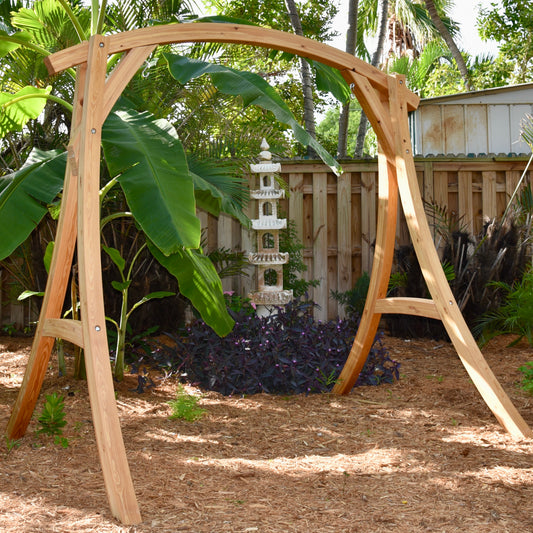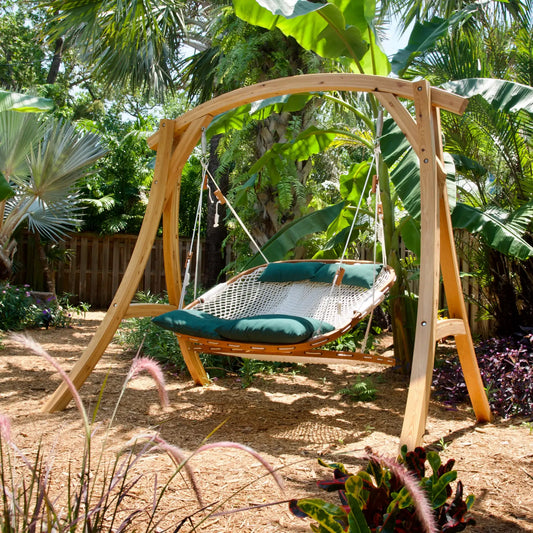Springtime Hammock Check: Ensuring a Safe and Relaxing Hang

Several factors can contribute to damaging a hammock during winter storage:
-
Moisture: Exposure to moisture, whether from rain, snow, or high humidity, can promote mold and mildew growth on the fabric, ropes, or straps of the hammock. This can weaken the material and cause unpleasant odors.
-
Sunlight: Prolonged exposure to sunlight can cause the fabric of the hammock to fade and weaken over time. UV rays can also degrade synthetic materials.
-
Pests: Rodents or insects seeking shelter during the winter months may find your stored hammock an attractive nesting spot. They can chew through the fabric or ropes, causing damage.
-
Improper Storage: Storing the hammock in a way that puts undue stress on the fabric or ropes, such as folding it tightly or hanging it in a way that causes stretching, can lead to damage.
-
Extreme Temperatures: Fluctuations in temperature, especially if the hammock is stored in a place where it is exposed to freezing temperatures, can weaken the fabric and other materials over time.
To prevent damage during winter storage, it's best to store your hammock in a cool, dry place, away from direct sunlight and pests. If possible, store it indoors or in a shed. Make sure the hammock is clean and completely dry before storing it to prevent mold and mildew growth. If you're storing it outdoors, consider using a hammock cover to protect it from the elements.
As spring arrives, it’s the perfect time to dust off your hammock and prepare for lazy afternoons spent lounging in the sun. Before you can swing into relaxation mode, though, it’s important to ensure that your hammock is in good condition and properly set up. Here’s a simple guide to checking your hammock and rehanging it for the season:
-
Inspect the Fabric: Start by examining the hammock fabric for any signs of wear and tear. Look for fraying threads, holes, or stretched areas that could indicate a weakened structure. If you find any damage, it’s best to replace the hammock to avoid any accidents.
-
Check the Ropes or Straps: Inspect the ropes or straps that attach the hammock to its supports. Look for signs of fraying, knots coming loose, or any other damage. Replace any worn-out ropes or straps with new ones to ensure your hammock is securely attached.
-
Inspect the Hanging Hardware: Check the hooks, carabiners, or other hardware that connects the hammock to its supports. Make sure they are securely fastened and in good condition. Replace any damaged or worn hardware to prevent the hammock from falling.
-
Check the Supports: Examine the trees, posts, or other structures that support your hammock. Ensure they are sturdy and free from damage. If you’re using trees, consider using tree-friendly straps to protect the bark from damage.
-
Rehang the Hammock: Once you’ve inspected and replaced any damaged components, it’s time to rehang your hammock. Choose a location with enough space and ensure the supports are at the right distance apart for your hammock size. Follow the manufacturer's instructions for hanging your hammock properly.
-
Test Before Use: Before you settle in for a long relaxing session, give your hammock a test run. Sit or lie in it gently to ensure it’s securely attached and doesn’t sag too much. Adjust the tension if needed to achieve the desired level of comfort.
-
Regular Maintenance: To keep your hammock in top condition, perform regular maintenance checks throughout the season. Look for signs of wear and tear, and make any necessary repairs or replacements promptly.
By following these simple steps, you can ensure that your hammock is safe and ready for a season of outdoor relaxation. So, grab a good book, a refreshing drink, and enjoy the gentle sway of your hammock in the warm spring breeze.




